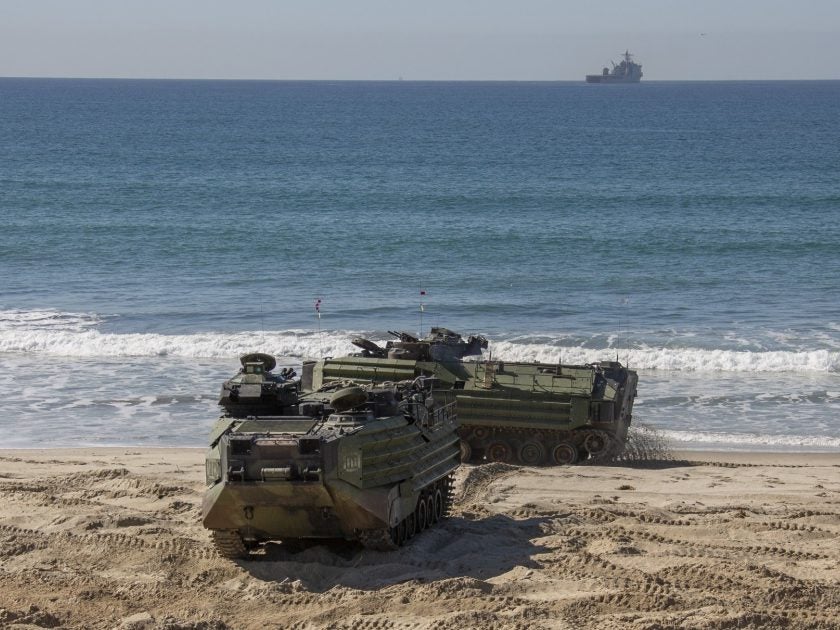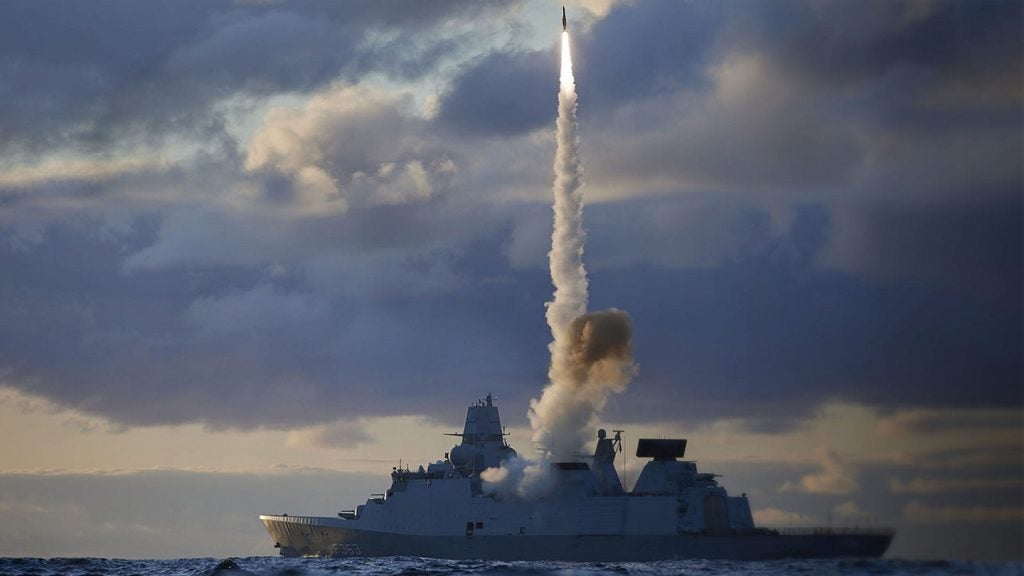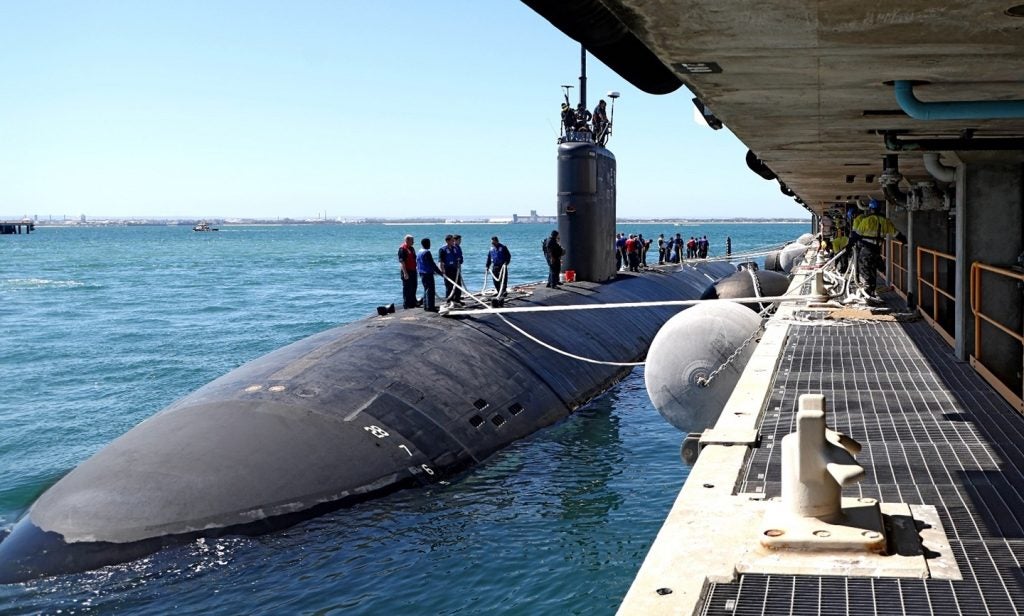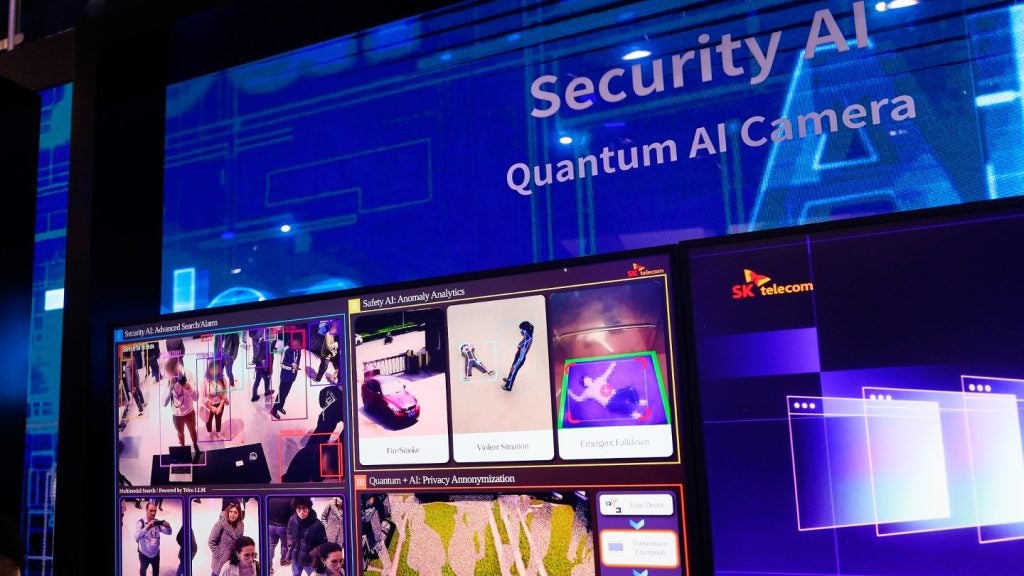
In a recently announced restructuring of the US Marine Corps (USMC), the force made clear its focus for the future; dominating in the Pacific. Pivoting away from decades of counter-insurgency operations the Marines are ditching their tanks and going all-in on long-range fires and unmanned aerial systems (UAS).
Announcing the changes, USMC said: “The future Fleet Marine Force (FMF) requires a transformation from a legacy force to a modernised force with new organic capabilities. The FMF in 2030 will allow the Navy and Marine Corps to restore the strategic initiative and to define the future of maritime conflict by capitalising on new capabilities to deter conflict and dominate inside the enemy’s weapon engagement zone.”
The core thrust of this is for the US Marine Corps to return to its roots and shift its focus on challenging the rising power of China in the Pacific. This fits into the wider US Department of Defence’s (DoD) swing away from a distributed array of threats to focus on one, China.
Royal United Services Institute (RUSI) sea power research fellow Dr Sidharth Kaushal explained to Naval Technology: “This is very much in line with both the commandants’ planning guidance and the DoD’s adoption of a one-war standard. Essentially, rather than focusing on deterring a full spectrum of challenges, the defence enterprise is being optimised for China.
“Within this framework, things like tanks – which can be useful in expeditionary warfare in the Middle East but have no real utility in the Asia-Pacific – are being pruned from the Marines’ force structure.”
The reinvented Marine Corps is going all-in on fleet support and gearing itself back towards island-hopping and fleet expeditionary bases. Part of this a pivot to meet China’s People’s Liberation Army (PLA) at its own game, with a 300% increase in rocket artillery among the USMC’s plans.
How well do you really know your competitors?
Access the most comprehensive Company Profiles on the market, powered by GlobalData. Save hours of research. Gain competitive edge.

Thank you!
Your download email will arrive shortly
Not ready to buy yet? Download a free sample
We are confident about the unique quality of our Company Profiles. However, we want you to make the most beneficial decision for your business, so we offer a free sample that you can download by submitting the below form
By GlobalDataKaushal added: “Instead, the emphasis of the USMC is to be supporting the fleet from expeditionary advanced bases formed on Pacific islands and atolls. This will be achieved by using long-range fires, UAVs and loitering munitions to deny sea-space to the PLA Navy (PLAN) and operating forward bare-bones logistical and resupply nodes such as FARPs (Forward Arming and Refuelling Points) to enable the US Navy to operate in the theatre more effectively.”
 Image: US Marine Corps.
Image: US Marine Corps.
AI and UAS powering distributed operations
A key challenge of acting across the vast distances of the Pacific and the speed of today’s warfare is acting faster. According to a report from the Centre for Strategic and Budgetary
Assessments (CSBA). A US ship in the Pacific could find itself come under fire from 4,500 missiles a day – roughly three missiles a minute.
Keeping up with this pace of conflict across such a vast area will require operational support tools that can pull in and instantly process vast quantities of information about the theatre.
Despite often being mooted as a buzzword in defence circles, this is exactly the kind of area in which artificial intelligence (AI) could excel. Anduril, a defence contractor specialising in AI and UAS and founded by Palmer Luckey, sees its LatticeAI platform as a possible example of what could power the Marine Corps Pacific push.
Anduril head of strategy Chris Brose told Naval Technology: “It really gets down to the question first and foremost of how do you increasingly put machines into positions that they excel at? Doing tasks that they increasingly are capable of doing better than humans, particularly around making sense of large amounts of information, automating very repetitive menial tasks. So that human operators can really focus more on making better quality decisions commanding systems and people.”
For the US Marine Corps, being tasked with being the tip of the spear in the Pacific means distributed operations will be essential; with a small force spread across such a large area, personnel will need to make quick decisions, especially in a potential future conflict.
Brose, who previously worked on the US Senate’s Armed Service Committee, went on to say: “Specifically for the Marine Corps, this is important because they’re a small service and they don’t have excessive amounts of manpower. To me, the real opportunity and greatest potential for these technologies is really flipping the traditional model of command and control on its head.”
The second component of this is UAS. The planned force redesign will see the number of Unmanned Airborne Systems (UAS) squadrons in the USMC doubled, while the number of jets in its fixed-wing squadrons is shrunk. Using UAS to deny sea and air space in a number again frees up the personnel to focus on other tasks and keeping a drone in the air is cheaper than using an F-35B.
As USNI News reported in March, the Marine Corps is putting its efforts into a family of UAS, including smaller ship-borne aircraft and larger land-based systems, this would give the Corps the ability to operate UAS directly from its vessels alongside fighters and from strategic bases in the Pacific.
 Anduril Ghost UAS. Image: Anduril.
Anduril Ghost UAS. Image: Anduril.
China’s rapidly evolving threat
As the Marine Corps moves towards facing the threat of China, the country continues to press on with its own plans for Pacific dominance. According to a report from the Congressional Research Service, the Office of Naval Intelligence (ONI) believes that the PLAN is on course for a 400 battle force ships by 2025, and 425 by 2030.
This means that at the time the US Marine Corps force redesign is being wrapped up, it will be faced with confronting a continually expanding PLAN in the region.
On top of this naval threat, as Global Defence Technology has previously reported, China has poured its efforts into the development of AI as a means of leapfrogging the traditional dominance of the US when it comes to defence.
Brose said: “The investments that China is making and the ways in which it seems to be relying upon these technologies build its own military are inherently going to put significant challenges on the US and allied militaries.
“We often tend to focus on the technologies and the real point of emphasis, I think, should be is what the technologies enable militaries to do and how they enable them to operate differently. That’s been the real challenge for the US military in the Pacific, which is that the Chinese have been modernising their military in a way that is specifically focused to call into question how the US military would operate in the region.”
The US Marine Corps of a decade in the future will look almost nothing like it does today. The military balance in the Pacific will likely be shifted too, and as the pace of change in computing and AI continues its rapid advancements it is unlikely it will operate in the way it does.
When the redesigned Marine Corps comes into full effect it will be faced with an ever-growing PLAN. How it faces this threat will be dictated by a sea-change in the way Armed Forces operate.







